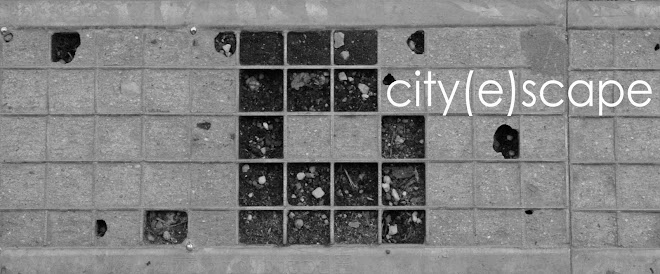(...) Moreover, a quite interesting part of the research project analyzed above, was a connection between the interactive, real time, informational map of SL with the real world online mapping (google maps/earth, GIS as well) (...).
Συνεχίζοντας απο εκεί και πηγαίνοντας κάπου εντελώς διαφορετικά.
Κατεβαίνω το royal mile, ή αλλιώς τον δρόμο που κάποτε έπαιρναν οι ντόπιοι βασιλιάδες για να κατέβουν από το κάστρο του εδιμβούργου προς τα ανάκτορα, και που πλέον είναι ό,τι πιο τουριστικό έχει να επιδείξει η πόλη, παρόλ'αυτά πολύ γραφικό και όμορφο. Και -πολύ λογικά- γεμάτο με τουρίστες και ξεναγούς. Άλλοι σοβαροί και (ψιλό)κουστουμάτοι, άλλοι πιο χύμα και προσιτοί, σε διάφορες γλώσσες να λένε πάνω-κάτω τα ίδια παραμύθια.
Το εντυπωσιακό είναι αυτό το πάνω-κάτω. Προφανώς και ο καθένας τους έχει κάποιες γνώσεις ιστορίας, ίσως έχει και κάποιες αναμνήσεις να αφηγηθεί, τελικά αυτό που ενδιαφέρει -τον επισκέπτη- όμως δεν είναι μία πιστή και εξακριβωμένη ιστορικά αφήγηση γεγονότων, αλλά μια αληθοφανής εκδοχή μιας/της ιστορίας. Και μάλλον εντυπωσιακή.
Έχοντας στο μυαλό μου τα digital media (που φροντίζουν να μην βγαίνουν εύκολα από την σκέψη μου) και κυρίως το απόσπασμα που παραθέτω παραπάνω από το research proposal σκέφτομαι το google maps/earth και το σύνολο των φωτογραφιών που έχουν ανέβει online για μέρη σε όλο τον κόσμο + τις 3d απεικονίσεις του earth/ή τη δυνατότητα εικόνας 360 μοιρών που σου δίνει το street view και έτοιμο το puzzle!
Προφανώς είναι πλέον πολύ πιο εύκολο να έχουμε πρόσβαση σε πληροφορίες για περιοχές που δεν έχουμε επισκεφτεί. Μπορούμε να υποθέσουμε, επίσης, ότι η κάθε εικόνα μπορεί να μας δημιουργήσει αναμνήσεις. Ή τέλος πάντων, η κάθε εικόνα να έχει επίδραση σε κάτι μεταξύ της μνήμης/αντίληψης/φαντασίας μας (memory/perception/imagination).
Οπότε φτάνουμε κάπου εδώ:
Can we really talk about constructed memory because of the digital media? Or maybe we should rephrase saying that the boundaries among memory/perception/imagination become more blurry on the informational age?
What happens is that anyone can easily access interactive/informational maps. Maps of real/built environment, where he/she can not only process various information referring to the area of interest, but also see pictures of the area. According to the engine being used, he/she can either have a panoramic view of the neighborhood (google street view) or a 3d model (google earth). Thus, our perception of an area we've never been to becomes more and more clear. Virtual worlds like SecondLife also offer the possibility to the user/citizen to experience a walk close/through monuments or characteristic spots of almost every (very real) city.
Even though it's quite far from someone to be confused between real/virtual it becomes much more common every day to use digital media in order to recognize areas through interactive and informational mapping. The more we use it, the more familiar it gets. How far are we actually from having constructed memories of places we've never been to? From neighborhoods seen only through google's applications or 3d virtual worlds?


